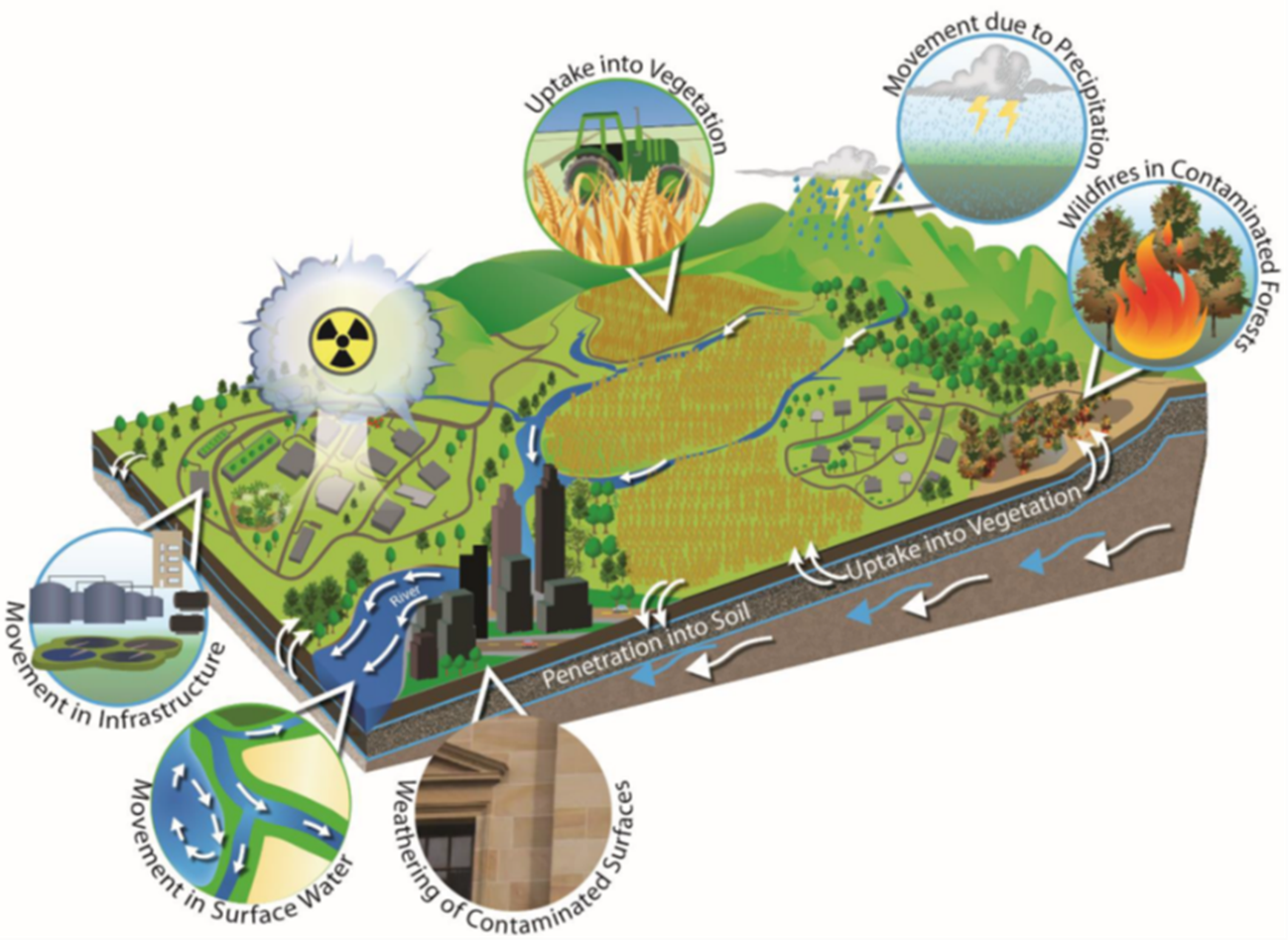Radiological Fate & Transport

A radiological release may result from a dispersal device, nuclear power accident or be generated through the decay processes from an accident, or from an improvised nuclear device. The likely contaminant from such an event would be Cesium (Cs), an extremely mobile and difficult to clean up radionuclide (with 137Cs and 134Cs being the predominant isotopes). It will probably take the form of cesium chloride (CsCl). Knowledge of the transport of Cesium in the environment is crucial to inform cleanup and sampling strategies due to its initial mobility right after deposition.
EPA is assessing how Cesium moves within the environment following an intentional or accidental release. EPA is conducting experimental and modeling studies and incorporating field data from the Fukushima and Chernobyl nuclear power plant accidents to achieve this.
Research Areas
- Cesium's Interaction in the Built Environment
- Cesium's Movement in the Natural Environment
- Radiological Stormwater Modeling
